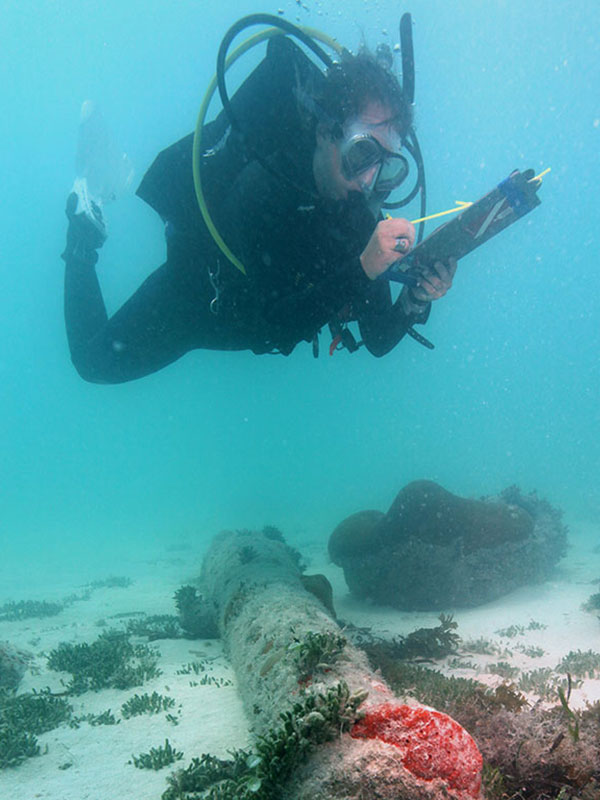You would think that a landlocked state like Indiana could not be home to one of the country’s most prominent academic scuba diving programs led by an expert on ancient shipwrecks, but IU’s Center for Underwater Science has made an international name for itself as a top site for the research and preservation of submerged historical and biological treasures. Charles Beeker, longtime director of the Center, is a “sea hero,” a title bestowed on him by Scuba Diving magazine. He is a crusader against destructive ocean treasure hunting, a partner with governments hoping to preserve their cultural and natural heritage, and a role model who has inspired countless students to dive into new career directions.
Featuring the IU Center for Underwater Science

Tori Galloway (B.A. 2019), a Ph.D. student in the Department of Anthropology, is currently a visiting lecturer at the Center. Galloway is a prime example of the kind of student who thought diving might be a fun pastime, but then saw it grow into a passion. She says she kind of fell into it, so to speak—taking a diving class, then heading to the Florida Keys on field project, then hanging around the program more and more until finally landing on the Underwater Science staff while pursuing graduate studies.
“Our program teaches scientific methodology and uses scuba as a tool for data collection,” she says.
Kirsten Hawley, lab coordinator for the Center for Underwater Science, graduated from IU in 2016 with degrees in Anthropology and Underwater Archaeology. Her work at the Center focuses on preserving sixteenth century ships and shipwrecks, photogrammetry, and the preservation of submerged cultural and biological resources. It turns out that one of the best ways to conserve an item is to leave it under the sea. “We study it where it is, with minimal disruption of the environment,” Hawley says. That makes it all the more important to ensure that others also refrain from disturbing artifacts and shipwreck environments. “We create marine protected areas and they’re preserved [in place]. The concept is a model for protecting underwater cultural heritage and the associated biology.”
Under Beeker’s guidance, IU’s Center has helped establish multiple “living museums of the sea” in underwater places far from the Bloomington campus. These institutions are created amid the wreckage of ancient ships, providing legal protections for the sites, generating a wealth of data, and inviting divers to visit places that treasure hunters might otherwise tear apart. The latest living museum launched in 2019, amid the wreckage of the Nuestra Señora de Begoña, a Spanish merchant vessel that went down off the coast of the Dominican Republic in 1725. It is accessible only through scuba diving or snorkeling and is a gold mine of interesting underwater sights; archeological artifacts and marine biology thrive in this setting.
With living museums now welcoming divers in multiple places, the Center for Underwater Science is making a difference in the way that both people and governments look at shipwrecks. “This is a major theme IU has been promoting in the Dominican Republic, and it’s really starting to take off,” Galloway says. “Local communities are really starting to take care of them.” It is also a whole different way of looking at the underwater environment than engaging in treasure wars. As Beeker puts it, “You’re going to find history, which to me is the real treasure.”
 The College of Arts
The College of Arts